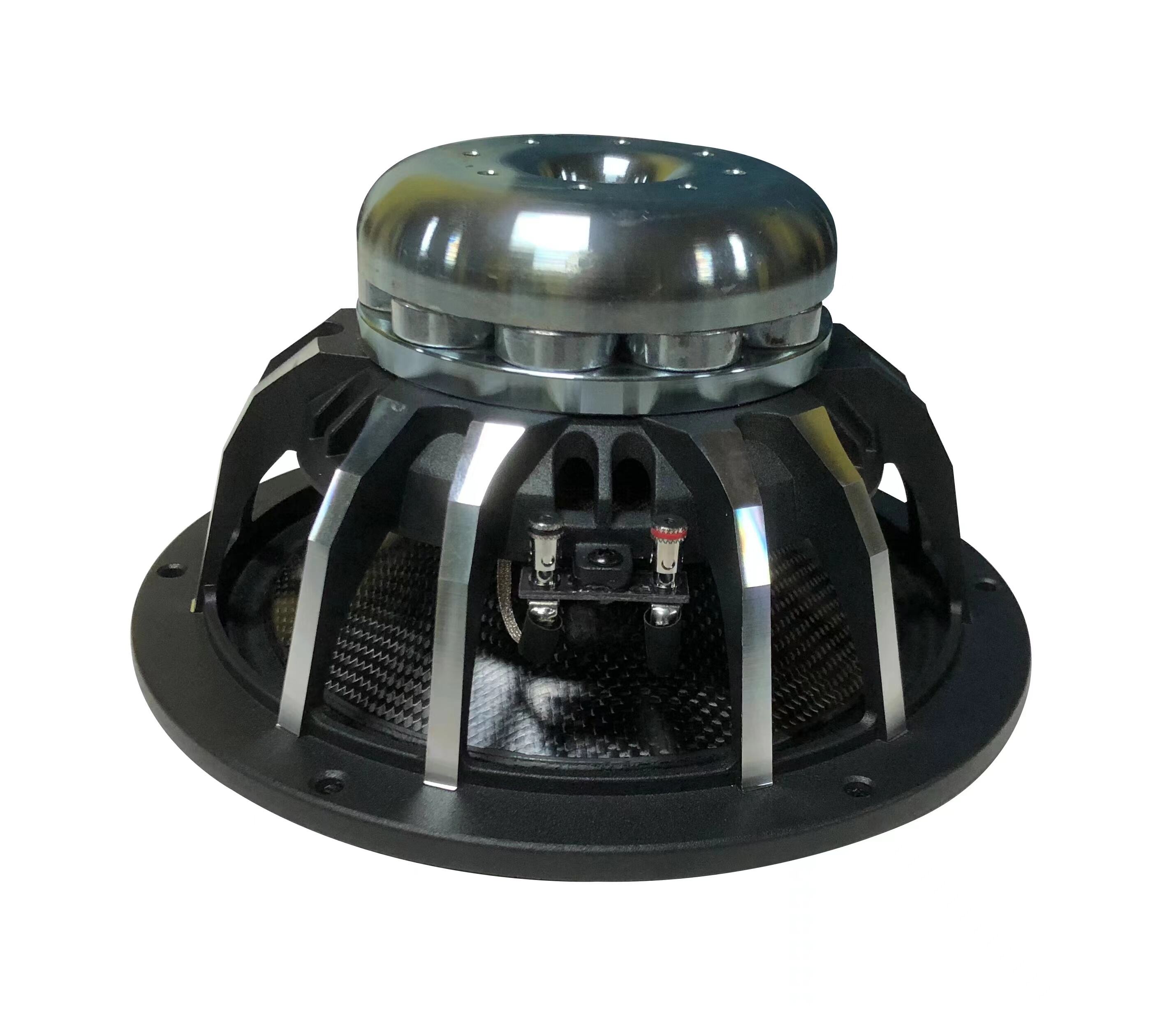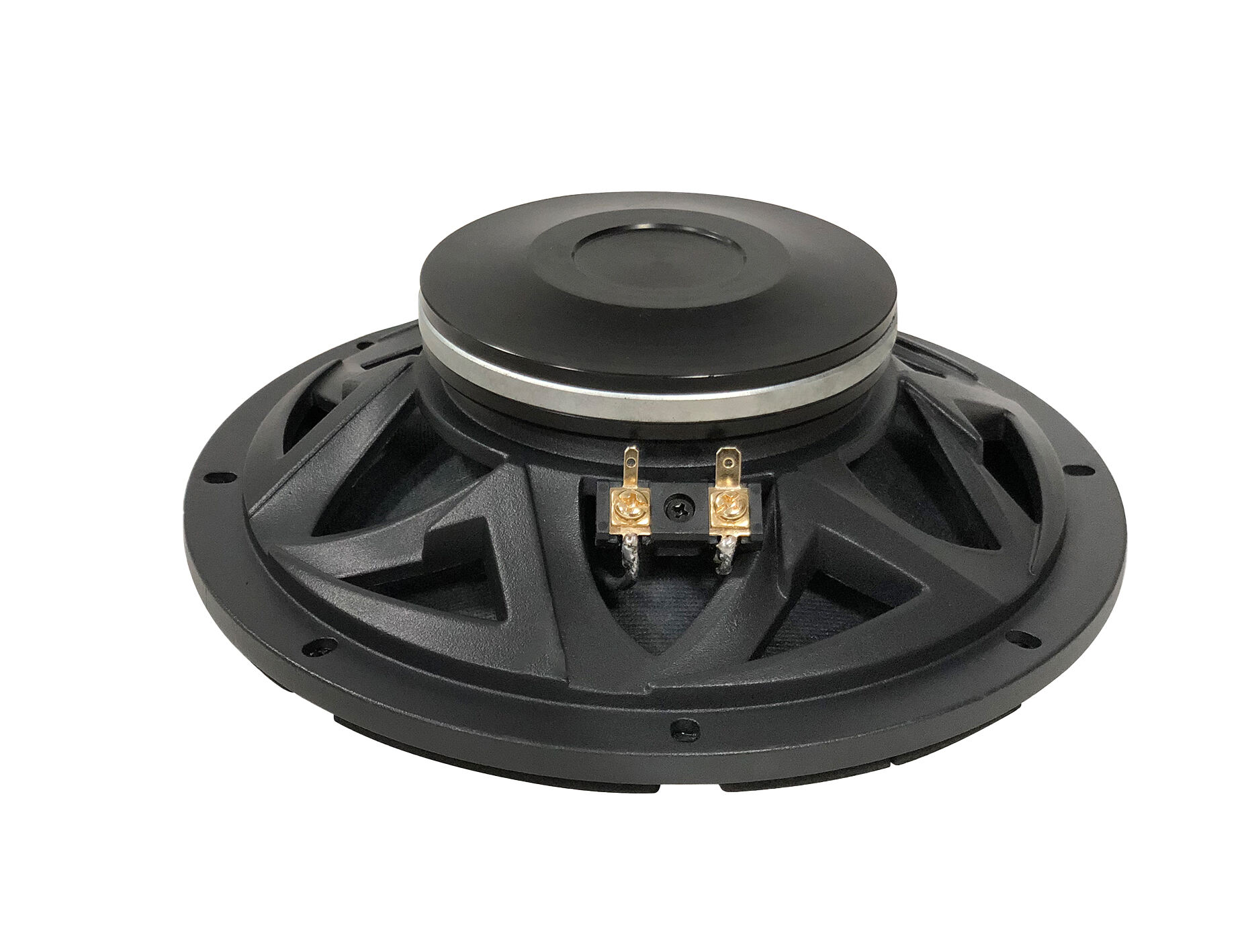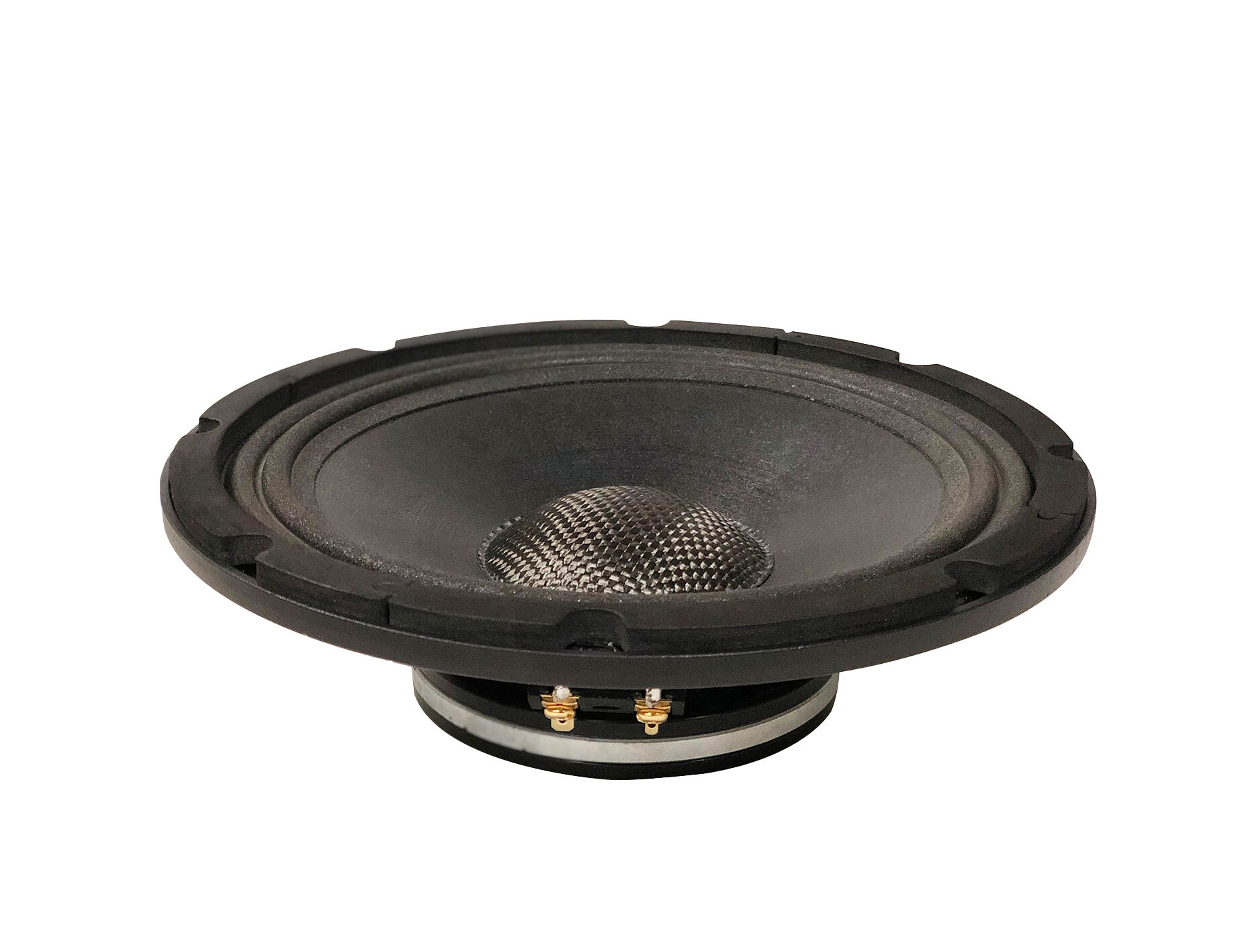Line array systems are a staple in large - scale sound reinforcement applications, from outdoor music festivals to stadium concerts. At the heart of these systems lies the midrange speaker for line array, which is specifically engineered to meet the unique demands of such setups. One of the key requirements for line array midrange speakers is consistent directivity control. In a line array, multiple speakers are stacked vertically to create a column of sound. This configuration allows for better coverage of large audiences, but it also requires that each speaker, especially the midrange ones, has a precisely controlled dispersion pattern. Midrange speakers for line arrays typically feature waveguide technology. Waveguides are designed to shape the sound waves emitted by the speaker, directing them in a specific pattern. This helps to ensure that the midrange frequencies are evenly distributed throughout the venue, reducing dead spots and providing a more uniform listening experience for everyone in the audience. Another important aspect is power handling. Line array systems are often used in high - volume environments, and the midrange speakers need to be able to handle significant amounts of power without distortion. These speakers are built with robust voice coils, large magnets, and efficient cooling systems. The voice coil, which is responsible for converting electrical signals into mechanical movement of the speaker cone, is made from high - quality materials that can withstand high temperatures and currents. The large magnets provide a strong magnetic field, which in turn enables the voice coil to move the cone with greater force, resulting in louder and more powerful midrange sound. The cooling systems, such as heat sinks or ventilation holes, help to dissipate the heat generated during operation, preventing the speaker from overheating and ensuring its long - term reliability. Durability is also a crucial factor for midrange speakers in line arrays. These systems are often transported and set up frequently, which means the speakers need to be able to withstand the rigors of handling and movement. They are typically housed in rugged enclosures made from materials like aluminum or plywood. These enclosures not only protect the internal components of the speaker but also contribute to its structural integrity, helping to maintain consistent sound quality even in challenging environments. Additionally, line array midrange speakers are designed to be easily integrated with other components in the system, such as high - frequency drivers and subwoofers, through advanced crossover networks. These networks ensure that each speaker operates within its optimal frequency range, resulting in a seamless and powerful sound output.


